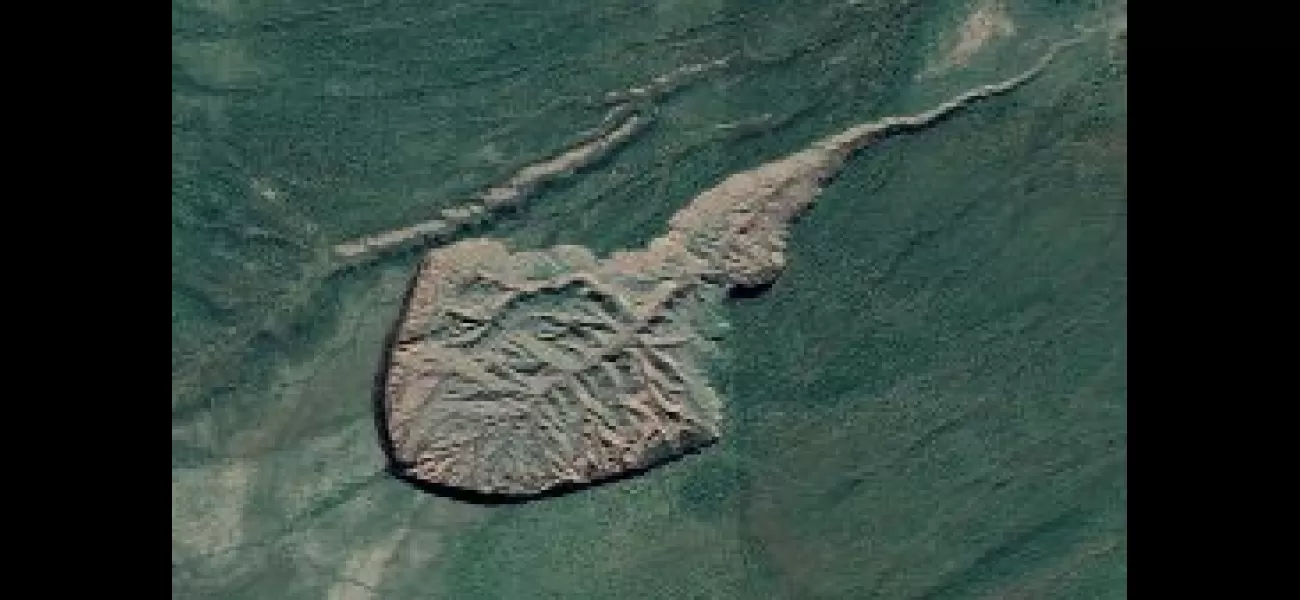A voracious 'mouth of hell' continuously consumes surrounding land without any means of halting its progress.
A tadpole-shaped sinkhole, but definitely not a baby.
May 21st 2024.

The crater, now stretching over a kilometer long, is still expanding at a rapid pace, earning itself the nickname "mouth to hell." Those who live nearby have reported hearing strange booms emanating from its depths, adding to the eerie atmosphere surrounding the massive sinkhole. Officially known as the Batagay megaslump, it first appeared as a small crack in the 1960s, but has since grown to become a behemoth, expanding at a rate of ten to thirty meters every year. This makes it one of the largest sinkholes in the world, with over 35 million cubic meters of soil lost in the past few decades in the Yana Uplands of northern Yakutia, Russia.
The reason for its continuous growth lies in the melting permafrost caused by climate change, making the surrounding ground less stable. Sadly, this is not an isolated incident, as sinkholes are becoming more common around the globe due to various factors such as melting ice and extreme weather conditions. The Batagay megaslump also contributes to climate change, as it releases carbon that had been trapped in the ground for thousands of years. It's no wonder that people have been fascinated by it for years, both for its scientific value and its eerie and potentially dangerous nature.
As the crater expands, it exposes layers of ground that have been buried since the last ice age, providing valuable insights into the geological history of the region. In addition, several well-preserved remains of animals have been discovered, including mammoths, horses, and musk oxen. One of the most remarkable finds was a mummified foal estimated to be around 40,000 years old, giving us a glimpse into the past of this remote and desolate place.
The Batagay megaslump is not the only sinkhole to be known as the "mouth of hell." In Turkmenistan, there is a fiery pit that has been burning since the 1980s. The Darvaza gas crater was initially ignited by engineers in an attempt to make the area safer, but it never stopped burning and has become a tourist attraction in the Karakum Desert. Unlike this man-made pit, the one in Russia is entirely natural, although human activity has undoubtedly played a role in its formation.
According to Julian Murton, who wrote about the Batagay megaslump in Permafrost and Periglacial Processes, the crater will eventually stabilize due to reaching the limits of the surrounding topography. However, this process could take years to decades, and there is still a possibility that it could start expanding again in the future. Murton also noted that this sinkhole is exceptional in its ability to provide valuable insights into the effects of climate change and how sensitive permafrost is to abrupt thawing. He believes that the slump's growth has accelerated due to the warming and wetting of the climate, highlighting the urgent need for action to mitigate the impacts of climate change.
The reason for its continuous growth lies in the melting permafrost caused by climate change, making the surrounding ground less stable. Sadly, this is not an isolated incident, as sinkholes are becoming more common around the globe due to various factors such as melting ice and extreme weather conditions. The Batagay megaslump also contributes to climate change, as it releases carbon that had been trapped in the ground for thousands of years. It's no wonder that people have been fascinated by it for years, both for its scientific value and its eerie and potentially dangerous nature.
As the crater expands, it exposes layers of ground that have been buried since the last ice age, providing valuable insights into the geological history of the region. In addition, several well-preserved remains of animals have been discovered, including mammoths, horses, and musk oxen. One of the most remarkable finds was a mummified foal estimated to be around 40,000 years old, giving us a glimpse into the past of this remote and desolate place.
The Batagay megaslump is not the only sinkhole to be known as the "mouth of hell." In Turkmenistan, there is a fiery pit that has been burning since the 1980s. The Darvaza gas crater was initially ignited by engineers in an attempt to make the area safer, but it never stopped burning and has become a tourist attraction in the Karakum Desert. Unlike this man-made pit, the one in Russia is entirely natural, although human activity has undoubtedly played a role in its formation.
According to Julian Murton, who wrote about the Batagay megaslump in Permafrost and Periglacial Processes, the crater will eventually stabilize due to reaching the limits of the surrounding topography. However, this process could take years to decades, and there is still a possibility that it could start expanding again in the future. Murton also noted that this sinkhole is exceptional in its ability to provide valuable insights into the effects of climate change and how sensitive permafrost is to abrupt thawing. He believes that the slump's growth has accelerated due to the warming and wetting of the climate, highlighting the urgent need for action to mitigate the impacts of climate change.
[This article has been trending online recently and has been generated with AI. Your feed is customized.]
[Generative AI is experimental.]
0
0
Submit Comment





